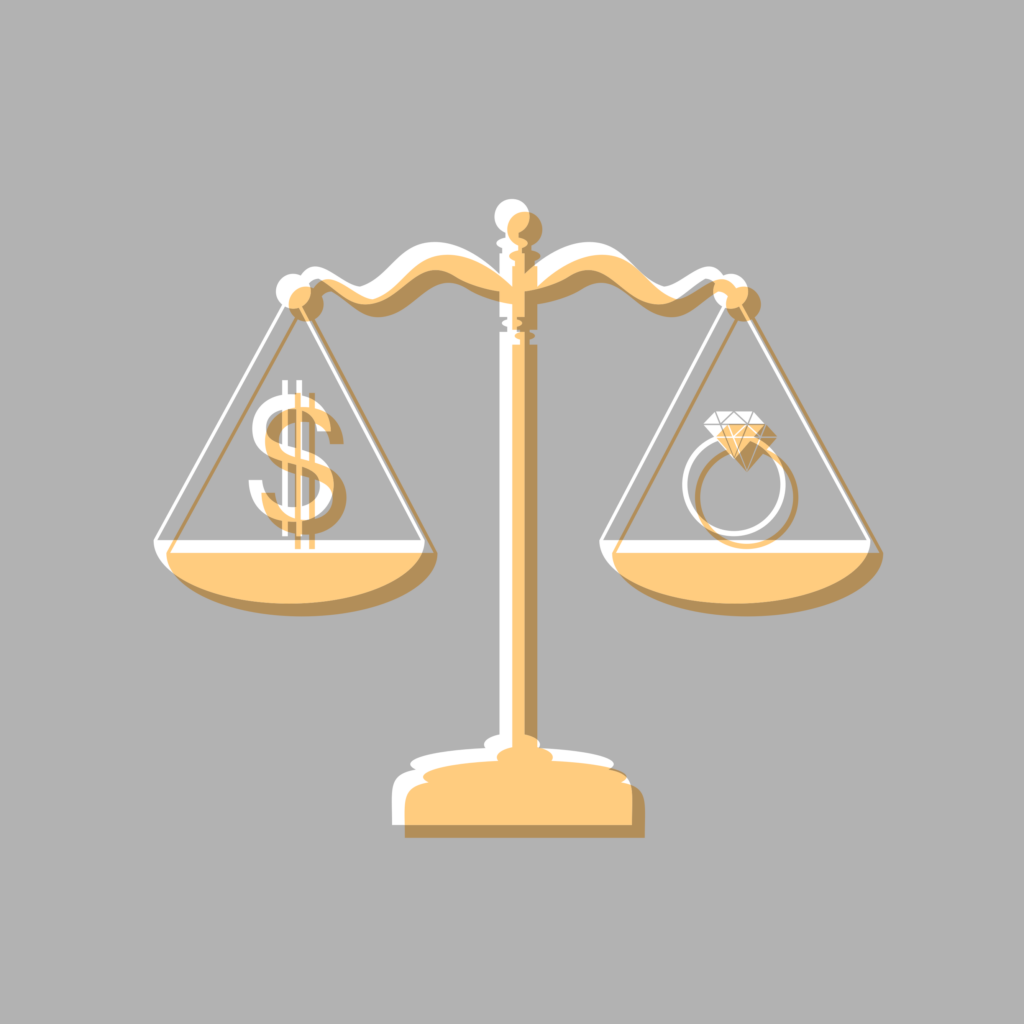
Gem and jewellery lovers know that to express a weight of a diamond a term “carat” is used, which is an international unit of measurement for a gem. One carat equals 0.200g (1/5 of a gram). Be careful not to confuse it with karat, a unit measurement for gold. The carat method of measurement is derived from the carob seed. This seed grows in pods on the locust tree and is used for enhancing flavour and livestock feed. Because the little seeds are very consistent in size and weight, they served as a rather stable foundation for gem weight. The jewellers and merchants utilised them as counterweights in hand-held balance scales since digital scales did not exist in antiquity. In this way, the carat system has evolved from the carob seed. Even as accurate weighing methods got better, carat weight varied: a “one-carat” diamond could weigh anywhere from 0.95 to 1.07 metric carats. This was maintained until the early twentieth century when a carat was established as 0.20 grammes. The carat now represents the same gem weight across the world. Nowadays the unmounted diamonds’ weight is measured by using an electronic micro-balance scale. This scale shows weight in hundred thousandths of a carat, which is then rounded to the hundredths. In addition, hole gauges act as tools for evaluating diamond diameters. They’re sheets of plastic or metal with holes that match different diamond girdle sizes. They also frequently provide an estimated weight for each diameter. Clear templates are used to visually evaluate diamond weight. They are particularly useful for determining the weights of tiny diamonds in multi-stone settings. Templates provide diamond outlines in a number of forms and sizes. To find out a carat weight using a template, you have to compare it with the outline of the template and look at the approximate weight. It is an easy method to figure out the weight, but it might not be very accurate since it is just an estimation. Moreover, these templates are not applicable for coloured stones.
In the gem world, there are unique ways of conveying weight. Apart from the word “carat” there is another term “point.” Point is used for a diamond that is less than one carat. For example, a diamond whose weight is 0.25ct may be expressed as 25 points; 0.01 to 0.10ct weight may be described as one to ten points. This expression is quite often used for tiny diamonds called “melee.” In general, the weight of a melee is between 8 and 13 points (0.08ct to 0.13ct). However, there is a size variation of melees for different countries. For some countries, the stone must be less than 10 points, for others less than 15 points, and the maximum weight is 18 points. In jewellery, they are usually set in clusters and rows making the piece sparkly. When there are many melees in the jewellery, the weight of them is expressed in total. Additional expressions a dealer might use are:
1. A “light half” — stone weighing somewhere between 0.45 and 0.49 carats.
2. A “light carat” — between 0.96 and 0.99 ct.
3. A parcel of “thirds” — could contain stones weighing between 0.30 and 0.37 carats each.
4. A parcel of “halves” — could weigh between 0.50 to 0.69 ct.
When it comes to pricing there is a “magical size effect,” which is referred to half a carat, three-quarter carat, one carat, etc. The price changes dramatically when it hits numbers such as 0.5, 0.75 1.0, etc. For instance, one diamond weighing 0.97ct and the other 1.00ct might not look that much different, but the fact that one is one carat and the other is 0.97ct noticeably influences the price. Is the bigger diamond better? The bigger diamond does not always mean better, the other 3Cs play an important role in the valuation of a gem as well. If the other 3Cs are the same then yes, the bigger would be considered better and more expensive. But if the diamond’s weight is 3.00ct, but its clarity is I3, colour is O and the cut is poor, then its overall quality and price would be lower than of the diamond whose weight is 1.50ct, but the clarity is FL, colour D and an excellent cut. Therefore, when purchasing a diamond, one should always keep in mind all of the 4Cs and not get into the trap of thinking “the bigger the better.” It is totally correct to say that the large diamond is rare, however, so is high clarity and colourless diamond.

